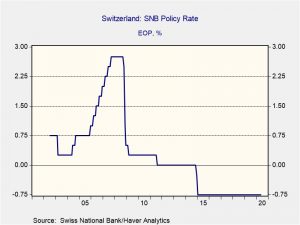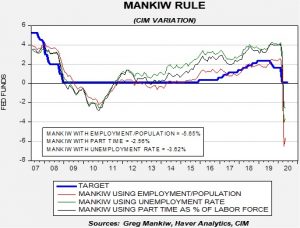by Bill O’Grady, Thomas Wash, and Patrick Fearon-Hernandez, CFA
[Posted: 9:30 AM EDT]
Good morning, and happy Monday! U.S. equity futures and global equity markets are moving higher this morning led by China after comments in the state media suggested it’s good to buy stocks. We update the pandemic news. China has several news items of note. Overseas, we have a new PM in France and elections in Croatia. Here are the details:
COVID-19: The number of reported cases is 11,470,637 with 534,784 deaths and 6,193,538 recoveries. In the U.S., there are 2,888,729 confirmed cases with 129,947 deaths and 906,763 recoveries. For those who like to keep score at home, the FT has created a nifty interactive chart that allows one to compare cases across nations using similar scaling metrics. The latest R0 data suggest the majority of states are seeing a rise in the pace of infections. Additionally, this link gives a single source for the testing progress of treatments and vaccines.
Virology:
- Temperature checks are the most common way that companies screen customers or employees. However, smell checks, where the person is asked to determine a scent may be more effective. The most common symptom of COVID-19 is a loss of the sense of smell.
- Although studies are in the early stages, vitamin D may prove to offer at least some protection against COVID-19.
- Hospital systems are approaching capacity in some southern and southwestern states.
- One of the more frustrating elements in monitoring this pandemic has been a surfeit of research papers published, many of dubious value. The media tends to report on the most sensational headlines but almost never touches on the retractions. China has been publishing a great deal of research; a recent analysis suggests that researchers there are reusing data, which allows for the fast publication of reports that probably don’t add much to the pool of knowledge.
- Apple and cherry farms usually hire seasonal workers to pick their crops. Reports indicate these workers have been hit by the pandemic, putting the harvest at risk.
China news:
- For the first time in six years, the U.S. has sent two carrier groups into the South China Sea. China is in the midst of a five day drill around the Paracel Islands; Vietnam and the Philippines have protested against the military exercise. The U.S. has also expressed concern. This region has been under stress for some time, as China asserts its right to an area of control that is not recognized by any other power.
- S. security policy has been steadily shifting toward Asia, especially China. The U.K. is formulating its security policy and a similar pivot toward Asia is likely in the offing. At the same time, the U.K. has clearly cooled on using Chinese 5G technology for its next generation of telecommunications.
- As Beijing implements the crackdown on Hong Kong, Taiwan is deciding how open it will be in allowing Hong Kongers to emigrate. The more open Taipei is to allowing dissidents to flee, the angrier the PRC will be and the greater the threat to the island. Meanwhile, Australia is planning to become much more welcoming to Hong Kongers looking to exit.
- Zhou Li, a former deputy director of the CPC’s International Liaison department, warned Chinese leaders that they should decouple from the dollar system in anticipation that the U.S. will use the dollar’s reserve status to harm China’s economy. If China were to make this shift, it would no longer need, in fact it should avoid, trade with the U.S. This is because trade will generate dollar balances it wants to avoid.
- Flooding is raising worries about the stability of the Three Gorges Dam. Taiwan media reports earthquakes have occurred in the region around the dam, triggering landslides. So far, nothing official has come from Beijing, but a problem at this dam could be a catastrophe for the areas downstream.
- We have noted that China has relaxed its “one-child” policy for Han Chinese. According to reports, it is implementing aggressive tactics to reduce the birth rate of its Uighur population, including forced abortions, sterilizations and IUD’s.
Policy news:
- One of the issues we are watching carefully is state and local government spending. Unlike Federal government spending, which can be countercyclical, state and local governments are pro-cyclical. When economic activity slows, state and local governments usually see a decline in revenue with leads to falling spending. If the Federal government or the Fed refuse to take action to counter this issue, the impact of fiscal and monetary stimulus will be blunted due to a drop in state and local government spending.
- Sen Hawley (R-MO) proposed a bill to force the U.S. to exit the WTO. Reports indicate that parliamentary maneuvering will prevent the bill from coming to a vote before the elections, sparing incumbents a potentially problematic vote.
Foreign news:
- July is the critical month for Brexit. The Johnson government has indicated that it will not ask for an extension, so negotiators will need to have a deal done by July 31 or it will not give enough time for the EU to sign off on an agreement. Meanwhile, negotiators have failed to meet a deadline of June 30 for finishing an assessment of the financial system regulatory regimes, meaning that U.K. banks and asset managers may lose access to the EU’s financial markets.
- The Johnson government is proposing to exempt most home purchases from taxes in a bid to boost homebuilding.
- President Macron of France is implementing a cabinet shakeup, naming a new prime minister, Jean Castex. Other new members of his government are expected to be named throughout the day.
- A couple of months ago, the German Constitutional Court threatened the ECB’s unconventional monetary policy. The Merkel government and the Bundesbank, through their actions, appear to be deciding for the court that the ECB’s policy is legal.
- Last week’s WGR explored the notion of a true Eurobond and the potential for the euro to become a much more significant reserve competitor to the dollar. For that threat to emerge, Chancellor Merkel must negotiate the difficult differences of opinion between the northern and southern European nations. Greece’s PM warns that his country won’t agree to the plan if it faces conditions on the funding.
- Elections were held over the weekend in Croatia. The incumbent center-right Croatian Democratic Union won a plurality of seats but will need to create a coalition to form a majority government. PM Andrej Plenkovic called early elections and the gamble worked.
- In the wake of the USMCA, Japanese car manufacturers have opted to triple the pay of Mexican workers, rather than move production to the U.S.
- The Swedish ruling coalition is fracturing over the issue of immigration and asylum. The current government is already a minority as the Swedish political landscape is so divided that forming a majority government proved impossible. Thus, if we see a member of the current coalition exit, it may not trigger elections.
- Sharp declines in worker remittances are having a negative impact on numerous frontiers and emerging economies.
- We may see a rare snap election in Malaysia as PM Yassin attempts to solidify support.




